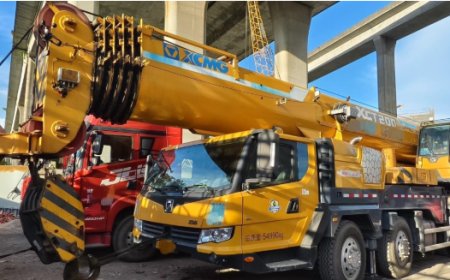A Complete Troubleshooting Guide for Ceiling Fan Faults
This article offers a complete guide to identifying and fixing common ceiling fan faults, helping homeowners keep their fans in top condition.

Introduction
Ceiling fans are essential for maintaining airflow and comfort in any home. Whether it's during the hot summer months or for circulating warm air in winter, a reliable ceiling fan keeps your living space pleasant year-round. Among the leading brands on the market, the Harbor Breeze Ceiling Fan stands out for its blend of modern design, affordability, and functionality. Like all appliances, even high-quality ceiling fans can face occasional issues. This article offers a complete guide to identifying and fixing common ceiling fan faults, helping homeowners keep their fans in top condition.
Common Ceiling Fan Faults and How to Fix Them
1. Fan Not Turning On
One of the most common problems is when a ceiling fan fails to power on. Start by checking the basicsensure that the wall switch is working and that there is power running to the outlet box. Then, inspect the circuit breaker to make sure it hasnt tripped.
If you're using a Harbor Breeze Ceiling Fan with a remote, test the remote by replacing the batteries and ensuring the frequency settings (dip switches) match between the remote and the fan. Sometimes, resetting the fanespecially if it has a smart receivercan restore functionality.
2. Wobbling or Shaky Fan Blades
Wobbling fan blades can be both annoying and unsafe. Typically, this is due to uneven blade alignment or loose screws. Turn off the fan and check all the screws securing the blades to the motor. A blade balancing kitoften included with Harbor Breeze modelscan help identify and correct the imbalance.
Sometimes, blades may warp due to humidity or age, which can cause long-term wobbling. Replacing the affected blades is usually a good solution.
3. Noisy Operation
If your ceiling fan is making a clicking, humming, or buzzing sound, it could indicate loose components or poor installation. Check the mounting bracket, blade screws, and light kit (if attached) for tightness. Harbor Breeze fans are known for their quiet motor operation, so noise usually means something is out of place.
Lubrication may help if the motor supports it. Always consult the product manual before applying any lubricant, as some newer fans use sealed bearings that don't require oil.
4. Fan Speeds Not Changing
Ceiling fans usually come with multiple speed settings. If your fan stays on one speed or doesnt change when prompted, the capacitor may be the issue. The capacitor helps regulate fan speed, and it can degrade over time. Harbor Breeze fans generally allow for easy capacitor replacement. Be sure to purchase a capacitor compatible with your fan model.
Features of Harbor Breeze Ceiling Fans
What sets Harbor Breeze Ceiling Fans apart is their user-centric design and innovative features. Here are some notable characteristics that make these fans both reliable and easy to troubleshoot:
-
Remote Control Integration: Many Harbor Breeze models include a remote control, offering convenient access to fan speed and light settings. The remotes are designed with intuitive buttons and often include a reset or learn feature to re-sync the remote with the receiver.
-
Quiet Motor Technology: Known for their smooth and quiet performance, these fans are ideal for bedrooms, living rooms, and offices. Their quiet operation makes it easier to detect unusual noises, simplifying maintenance and troubleshooting.
-
Energy Efficiency: Most Harbor Breeze fans come with energy-efficient motors and LED lighting, making them economical and eco-friendly. These features not only reduce your power bill but also decrease wear and tear on internal components.
-
Reversible Motor Function: This allows users to switch the direction of the blades, providing cool air in summer and circulating warm air in winter. A handy feature that adds to year-round utility and system longevity.
-
Easy Installation: Harbor Breeze fans typically include a step-by-step instruction manual and often use a Quick Install system, making it simple even for DIY enthusiasts to mount and wire the fan.
When to Replace a Faulty Component
Despite troubleshooting, some issues may persist. In such cases, replacing a faulty component might be the best option. For instance, a damaged remote receiver, worn-out capacitor, or noisy motor can all be swapped with original Harbor Breeze replacement parts, widely available online and at major hardware retailers.
Make sure you have the model number of your fan before ordering any part to ensure compatibility. Most parts are designed for quick replacement and come with user-friendly guides.
Final Thoughts
Ceiling fans are indispensable in enhancing indoor comfort, and maintaining them ensures continued performance and safety. The Harbor Breeze Ceiling Fan combines stylish design, advanced features, and dependable performance, making it a great investment for any room. With this complete troubleshooting guide, homeowners can identify issues early and take the right steps to fix them.
By understanding how to address common faultslike fan wobble, remote issues, or noisy operationyou can extend the life of your fan and keep your home comfortable. For more complex repairs, its always wise to consult a professional, but many Harbor Breeze problems can be resolved with basic tools and a little know-how.





































